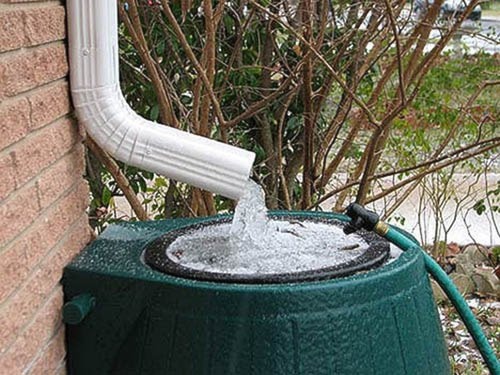It’s been a tough season for Fraser Valley lawn-care aficionados.
Low water inventory has resulted in water-use restrictions and outright bans on watering lawns.
Yet turf experts maintain that naturally green and healthy lawns moderate summer temperatures by absorbing the sun’s energy during the day and slow releasing it in the evening. So when lawns turn brown from a lack of water, area temperatures rise during the day.
So how can Maple Ridge and Pitt Meadows residents maintain healthy lawns while under such sprinkling restrictions?
Well, according to the Canada Housing and Mortgage Corporation, rainwater harvesting is an ancient practice, dating back thousands of years, and is still commonly used in many rural places throughout the world.
“Today, rainwater harvesting is making a comeback in urban centres as an additional source of water for a range of uses in and around the home.”

According to the CHMC, in many European countries, and some regions of Canada, having a limited amount of water that can be economically delivered to residences as potable water or limited technology available to treat water, has resulted in large-scale rainwater harvesting to help meet water demand.
With summer water restrictions becoming the annual norm in Greater Vancouver Regional District and the Fraser Valley, some experts are advocating for increased rainwater collection by homeowners to maintain lawns and gardens.
And indeed the Ridge Meadows Recycling Society encourages rainwater collection. The agency annually sells modern rain barrels; although they are sold out for 2015.
The RMRS says its Systern rain barrel “can lower municipal water demands and save energy at water treatment facilities by reducing water pollution and storm water runoff. Rain water, free from chlorine and water treatment chemicals, is an excellent water source for lawns, plants and gardens.”
The 208-litre (55 gallon) rain barrel — which the RMRS says is also available at many garden and landscaping stores — features mosquito mesh to keep bugs and leaves out; an overflow hose that can be linked to another Systern or can be directed away from the house; and a contoured spigot.
The Systern can easily accommodate existing downspouts, is BPA free, and has UV stabilizer added to resist deterioration from sunlight. They are made from recycled material.
Elsewhere in B.C., rainwater collection is being considered on larger scales.
The Regional District of Nanaimo is one such local government.
According to Joe Stanhope, chair of the RDN board of governors, rainwater harvesting is the collection and storage of rainwater for potable and non-potable uses, and they say that with the right controls in place, harvested rainwater can be used for irrigation, outdoor cleaning, flushing toilets, washing clothes, and even drinking water.
“Replacing municipally treated water or groundwater with rainwater for these uses alleviates pressure on regional aquifers and sensitive ecosystems, and reduces demands on municipal infrastructure,” Stanhope says.
“Stored rainwater provides an ideal source of readily available water, particularly during the long dry summers or in locations facing declining groundwater levels.”
The RDN has published its Rainwater Harvesting Best Practices Guidebook to provide useful information to residents who want to learn more about the benefits and opportunities of rainwater harvesting for non-potable and potable purposes.
The guidebook is a valuable resource for residents building their own rainwater harvesting systems or working with professionals to build a rainwater collecting system.
• The guidebook is available at:
http://www.rdn.bc.ca/cms/wpattachments/wpID2430atID5059.pdf
• The CHMC has also published useful reports on residential rainwater collection. To download the CHMC’s Collecting and Using Rainwater at Home: A Guide for Homeowners” go to:
https://www03.cmhc-schl.gc.ca/catalog/productDetail.
Kevin Gillies is a freelance writer for Black Press.
